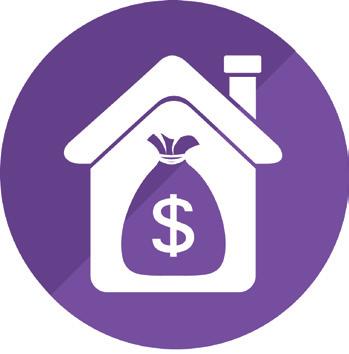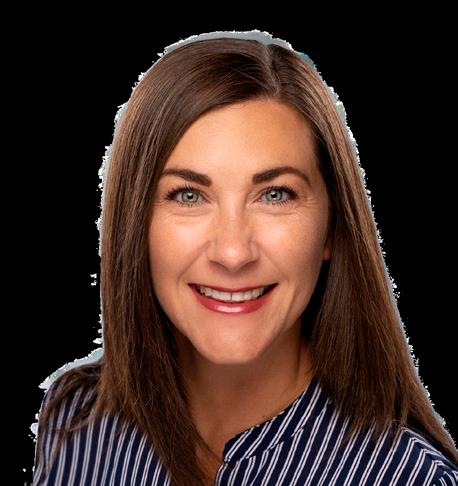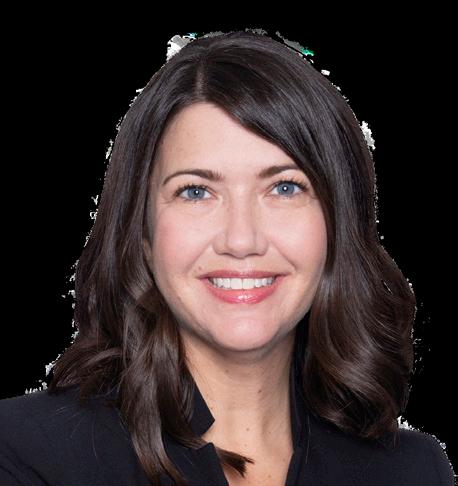THE ROAD TO 2023



A guide to budgeting, planning, investing and reaching your financial goals.









YOUR FUTURE is created by what you do TODAY.




America Saves Week is approaching, taking place February 27 – March 3. This year’s theme, A Financially Confident You, is exactly what we want for all of you. It’s the perfect time to take control of your savings and make a plan for your
At First Security Bank, we are dedicated to helping you achieve your financial goals. That’s why we are offering a range of resources and modules that can help you learn how to save more money, reduce debt, and take
We have a variety of modules that can help you establish healthy financial habits, set up an emergency fund, and create a budget that works for you. And the best part is that all our modules are completely free of
Metro Creative Connectioncharge!
Don’t miss this opportunity to take the first step toward financial confidence. Sign up for our modules today and take control of your savings! Enroll now at www.ourbank.com/education/financial-foundations
Passive investing utilizes a buy-and-hold approach to gradually build wealth.
Individuals looking to grow their money have many options at their disposal. For example, real estate is often cited as a wise investment, as the value of property has historically increased by a significant margin over the course of a lifetime, providing a substantial return all the while fulfilling the basic need for housing that everyone has. But buying property is not the only potentially lucrative long-term investment strategy.
A small percentage of investors may have the skill, savvy and iron stomach to excel with short-term investments. But most people feel more comfortable with less risky, long-term investments. For such individuals, one strategy worth considering is passive investing.

Passive investing utilizes a buy-and-
hold approach to gradually build wealth. Short-term fluctuations in stock prices do not affect passive investors, as one of the principles of passive investing is that markets will post positive results over time. So passive investors do not react with alarm when prices temporarily drop, even if they drop by a considerable margin.
Index funds are one of the most recognizable forms of passive investing. The investment experts at Vanguard, the company that first started offering index funds, note that an index fund contains a preselected collection of hundreds or even thousands of stocks or bonds or a combination of both. The theory behind this is that, even if one stock or bond is performing poorly, another within the portfolio is doing well, thus minimizing losses and saving investors the time and effort of tracking,
as well as buying and selling, individual stocks or bonds.
Conventional investment wisdom has long touted the benefits of diversification when investing. When investors put all of their eggs in one basket, they could then lose all of their investments if the value of that investment goes south. As previously noted, index funds include a collection of stocks, bonds or both, thus providing investors with sufficient diversification that can serve as something akin to a safety net when the values of certain stocks or bonds within the portfolio dip. Though no investment strategy can claim it is free of risk, passive investing through a vehicle such as an index fund can be a low-risk way to grow wealth over time.
The investment resource Investopedia cites lack of flexibility and smaller potential returns as two significant drawbacks of passive investing. Passive investment funds are limited to a predetermined set of investments that don’t often vary, if at all. That might be not sit well with individuals who prefer a more active and flexible approach to investing.
Big returns also are less likely with passive investment funds, as these funds are designed to track the market, not beat it by a wide margin. Individuals with long-term investment strategies likely won’t be turned off by this, though those looking for bigger rewards (which, notably, carry bigger risk) may be underwhelmed by the returns on passive funds.
Passive investing is a sound investment strategy for individuals who want to grow their wealth over the long haul.
Financial planning has become a catchphrase in recent years, and it’s something many consumers may not fully understand. Learning some key components of financial planning can help people have more capital on hand to help them achieve their short- and long-term goals.
A 2018 study commissioned by GuideVine that polled 1,000 Americans 30 and older about their finances found that many lack knowledge of basic financial terms. In addition, the study found that numerous people feel completely lost in regard to having a solid plan with their money. Financial planning can be intimidating, but learning the basics of sound money management can help people secure their financial futures.

According to the online learning resource WiseGeek, financial planning is a process of setting objectives, assessing assets and resources, estimating future financial needs, and making plans to achieve financial goals. Investing, risk management, retirement planning,
tax requirements, and estate planning are key components of financial planning.



To get started with financial planning, the financial guide and online resource Ramsay says individuals will need to see where they stand financially, establish financial goals and create a plan to reach those goals. While a person can create his or her own financial plan, oftentimes the help of a financial planner can make sure that all avenues are being explored, especially for financial novices.
It’s important to note that financial planning may mean different things to different people. For some, planning may revolve around saving for a child’s college tuition but still having enough money left to retire. Another person may be looking to save extra money to invest in a business venture. Others who are living paycheck to paycheck may need help reevaluating their spending so they can grow their savings.
One of the key components of financial planning is to begin doing it as

soon as possible. A financial plan can be instituted at any age, and goals can be revisited as life changes occur.
Financial planning strategies are something anyone can learn and utilize to secure their financial futures.
Whether your goal is increased cash flow to cover today’s rising costs or access to funds to pay for home renovations, a reverse mortgage loan could be the right solution.




Let’s chat about how putting your home equity to work could help you to enjoy a better retirement, with less financial worries.

Jobs may be how many people earn their money, but there are other ways to generate income that may not require the level of effort of a nine-to-five gig.
Passive income streams can be a great way to earn substantial amounts of money. Passive income can be earned through investing in stocks, money market funds, real estate, livestock, or savings bonds. Lending money also can provide passive income. Though such income streams are described as “passive,” they require an investment of time and/or money to get started.
Passive income streams enable the average person to make some extra money without taking on a full-time job. Unlike active income, where the more you work the more you earn, passive income often generates a flat level of return over time without the same level of commitment.
Passive revenue streams are continually evolving. Modern passive investments are varied, and can include the following ideas.
Popular sites like Vacation Rental By Owner (Vrbo®) and Airbnb put interested parties in touch with potential landlords. Vacation property owners or people who do not spend a lot of time at a primary residence may find this is a lucrative way to earn some extra money. Properties located in popular tourist areas may garner considerable income.
Digital items, such as expert advice guides, books, informational articles, digital photography, digital artwork, and more can be sold online. The product only needs to be created once, and then it can be sold infinite more times to generate an ongoing revenue stream.
According to the financial wellness site MyMoneyWizard.com, peer-to-peer lending (P2P) is the practice of lending money to borrowers who may not qualify for traditional loans. P2P is a growing market that re -


moves large financial institutions from the lending process. Lenders serve as the “bank,” and the consumer pays interest on the principal. The loans can be handled through an intermediary like The Lending Club, which is regulated by the Securities and Exchange Commission.
Real estate investment trusts, or REITs, offer the benefits of being a landlord without the hassle of dealing with fixing broken pipes or handling rowdy tenants. REITs are like stocks in real estate market. You purchase a share in a company that owns, manages or invests in various real estate properties. The higher the dividend rates the higher the risk, so investors must weigh REIT considerations carefully.
Passive income streams are another way to earn extra money and can be lucrative for those who take time to invest.
Retirement is something millions of professionals aspire to. Retirement isn’t necessarily when a person stops working forever. In fact, many retirees continue working as parttime volunteers and consultants.
Individuals have traditionally retired at the age of 65. However, the United States Social Security Administration indicates the normal retirement age (NRA) is the age at which retirement benefits are equal to the primary insurance amount. Primary insurance amount is based on a certain formula that includes year of birth. For most people born in 1960 and later, NRA is 67. Choosing to retire earlier may result in reduced benefits. But people who have financially planned for an early retirement may not view a decline in SSA benefits as a deterrent. If early retirement is a goal, these strategies could make it happen.
• Use a retirement formula. The retirement planning resource New Retirement says that the basic formula for retirement is to accumulate 25 times your annual expenses and then plan to draw down no more than 4 percent of that val-
ue every year. For example, if you spend $50,000 per year, then you need to have $1,250,000 in savings to be able to retire. Budget to realize that savings goal. For those who have trouble calculating retirement figures, utilize this planner: www.newretirement.com/retirement/ planner-signup/, which offers various retirement strategies.
• Trim extra expenses. Reduce your spending to put more cash toward your future. Comb through credit card statements and look at various bills to see where you can save.

• Reduce your biggest expenses. Food, transportation and housing comprise most people’s largest expenditures. Instead of routinely buying new cars, look for certified pre-owned models, which are equally reliable. Carpool to save money on commutes. Reduce food expenses by shopping sales and making eating out a luxury and not a regular thing. Downsize your home, or rent out a room (or apartment if it is a two-family) to offset mortgage costs.
• Consider a government gig or another pension-backed job. Pensions used to be part of many companies’ benefit packages, but now they’re harder to come
by. Focus employment on companies or careers that offer retirement perks that go beyond what a 401(k) offers. A pension waiting for you may mean you don’t




have to do as much personal scrimping and saving for an early retirement. With the right savings strategies, early retirement can be a reality.
Generations of families have placed their trust in Dokken-Nelson. Today, more people are making arrangements in advance to lift the burden from loved ones and provide a sense of calm. We are grateful to the families we ser ve and appreciate your confidence in our ability to create meaningful ser vices that help begin the healing process.

Generations of families have placed their trust in


If early retirement is a goal, these strategies could make it happen.

Millions of adults go to great lengths to protect their assets. Those measures run the gamut from simple everyday efforts like utilizing two-factor authentication when accessing financial accounts via online or mobile banking apps to more complicated undertakings like estate planning. Life insurance is a component of estate planning that is vital to anyone looking to protect their assets in the event of their death.

Life insurance is both similar to and different from other types of insurance. Like homeowners and auto insurance policies, life insurance provides financial protection in difficult circumstances. A life insurance policy is a contract between an insurance provider and a policy holder that guarantees a payout to beneficiaries designated by the insured individual in the wake of that individual’s death.
Insurance providers differ, but individuals interested in life insurance can expect to be asked about their medical histories and lifestyle habits when discussing policies. Prospective policy holders will often be asked to sign waivers that allow providers to access their medical records. This is necessary so companies can get an idea of the health of the person applying for life insurance, which will determine the cost of a policy. That information, as well as family history, is important because it can serve as an indicator of future health risks. Some variables, including lifestyle habits like smoking, won’t necessarily appear on an individual’s medical history. In an effort to address that, insurance providers typically ask prospective policy holders to answer a variety of questions about their lifestyle, including whether or not they smoke and how much alcohol they consume. It’s vital that individuals answer these questions honestly, as companies can deny payouts to beneficiaries if they determine policy holders misled them
during the application process.
Coverage needs vary depending on the individual. Life insurance is intended to provide for loved ones in the aftermath of a policy holder’s death. How much money will those individuals need to pay their bills? Young adults who are just starting their families may want more coverage than aging adults who have already paid off their homes and saved a considerable amount for retirement. The National Association of Insurance Commissioners recommends that individuals ask themselves how much of the family income they provide and if anyone else, such as an aging parent, depends on them for financial support. Answering these questions can help individuals determine how much coverage they need.
Insurance providers offer various types of life insurance policies. Term life policies are among the most popular because they tend to be affordable while offering substantial coverage. There are
different types of term life policies, but policies tend to run for anywhere from 10 to 30 years and expire around the time individuals reach retirement age. That’s because many people save enough for retirement and don’t have the sizable expenses, such as a mortgage, to account for at this point in their lives. That means loved ones won’t necessarily need to be provided for in the wake of a policy holder’s death.
Permanent life insurance policies last until the policy holder’s death so long as he or she continues to pay the premiums on time. Financial advisors can help individuals understand the ins and outs of the various types of permanent life insurance policies, which differ from term life policies because they can serve as investment vehicles and sources of loans in certain instances.
Life insurance is a vital component of asset protection that can offer peace of mind to policy holders who want to ensure their loved ones are provided for in the wake of their death.
Life insurance is a component of estate planning that is vital to anyone looking to protect their assets in the event of their death.
Homes symbolize many different things, including an investment in one’s future.
Bank of America says a home equity line of credit, often referred to as a HELOC, is a line of credit secured by your home. It is a revolving credit line that can be used for various expenses. The Credit Union of Southern California reports that a HELOC credit line is issued by a lender and has a limit and variable interest rate that is secured by the equity in your home.
A HELOC is similar to a credit card in that they both provide revolving credit. Investopedia says revolving credit is an agreement that permits an account holder to borrow money repeatedly up to a set dollar limit while also repaying a portion of the current balance due in regular payments over time. But unlike credit cards that may have high interest rates, the interest rates of HELOCs often are lower — a significant advantage when paying off large amounts of borrowed money.

Home equity accessed through a HELOC can be a great source of value for future renovations, large purchases such as cars, educational expenses, and alternative debt repayment. The credit limit of a HELOC depends on your credit standing and unpaid debts. It also is determined by the market value of the home and how much you owe on your mortgage. According to Credit Karma, banks tend to limit the amount borrowed to no more than 85 percent of the appraised value of the home, minus what is owed on the mortgage. HELOC terms also vary, but they can run for as long as 30 years.
Even though there are many benefits to HELOCs, there is a downside to using a home as collateral. Investopedia says home equity lenders place a second lien on the home (in addition to the first mortgage lien). Defaulting on HELOC payments can result in legal action and a home being repossessed. Another potential pitfall is a lender may reduce or freeze your credit line after missed payments. Even though banks attempt to limit how much can be borrowed through HE-
LOCs to help avoid potentially negative situations, they are not without risk.
Borrowers considering a HELOC have other options, including home eq-

uity loans. Homeowners can speak with financial advisors to learn more about their options for maximizing equity in their homes.

A HELOC credit line is issued by a lender and has a limit and variable interest rate that is secured by the equity in your home.
Individuals need not look very far to be reminded of the importance of planning for retirement. Television ad campaigns touting the need to plan for retirement have been front and center for many years. Banks also heavily promote their retirement planning services to account holders. The emphasis financial firms and banks place on retirement planning underscores just how important it is for individuals from all walks of life to prioritize securing their financial futures.
Ad campaigns can make saving for retirement seem simple, but plenty of people may have questions about how to save for the days when they are no longer working.
Why and when should I begin investing to build my retirement savings?
It’s never too early to start saving for retirement. Young professionals may not be anywhere close to retirement,

but that doesn’t mean they can afford to put off saving for the day when they call it a career. Much of that has to do with inflation. The rate of inflation varies, but it’s fair to assume that your cost of living will rise dramatically between your twenty-third birthday and your seventieth birthday. If you choose to simply save as opposed to investing that money, your money will not grow at a rate necessary to overcome inflation. Though there’s no guarantees with investing, traditional retirement investment vehicles have a proven track record of outpacing inflation. For example, Standard & Poor’s 500® (S&P 500) reports that individual retirement accounts (IRAs) grew by an average of 10.8 percent between 1971 and 2020. Over that same period, the U.S. Bureau of Labor Statistics indicates that the dollar had an average rate of inflation of 3.99 percent.
How can I save for retirement?
Various investment vehicles can help people save for retirement. Many people utilize employer-sponsored 401(k) re -

tirement plans. These allow individuals to deposit money via pre-tax contributions deducted from their paycheck. For young people, enrolling in these plans as soon as they’re eligible can be a great way to begin building their retirement savings, and since many people contribute between 6 and 10 percent of their pre-tax earnings, their take-home pay will not be significantly different once they enroll. IRAs, pension plans, certain life insurance policies, and regular contributions to personal savings accounts are some additional aways to save for retirement.
No two people are the same, so there’s no simple answer to this question. Estimates about how much people will need in retirement range from 60 to 80 percent of their yearly income the year they stopped working full-time. A financial advisor can be a useful ally as people try to calculate how much they will need to save for retirement. However, the sim-
plest answer to this common question is that there’s no such thing as saving too much money for retirement so long as saving does not adversely affect other areas of your life.
No law prohibits people from withdrawing funds from designated retirement accounts before they retire. However, there may be significant financial penalties and tax consequences if you do so. For example, the Internal Revenue Service allows penalty-free withdrawals from a 401(k) after an account holder turns 591⁄2. Withdrawals made before then could be subject to federal and state income tax and a 10 percent penalty of withdrawn funds. Individuals are urged to speak with a financial advisor about withdrawal guidelines and penalties prior to opening a retirement account.
Saving for retirement is vital and it’s never too early to begin investing in your financial future.
Plenty of people may have questions about how to save for the days when they are no longer working.
Astrong credit score is an undeniable asset for consumers. A strong standing in the eyes of potential creditors can save consumers money on relatively short-term expenses like vehicles and long-term purchases like homes.

Consumer credit is so influential in the lives of the average person that it pays to have some knowledge of what it is and how individuals can use it to their advantage.
Who issues consumer credit?



Consumer credit is typically issued by banks and retailers. One common question consumers have is who owns credit cards, which are among the most recognizable and widely used forms of consumer credit. Many credit card companies, including Visa, are now
publicly held companies after years of being owned by banks. However, many major banks, including Capital One and Bank of America, issue credit cards as well.
What is a credit score?
According to the credit reporting agency Equifax®, a credit score is a three-digit number which represents an individual consumer’s credit risk. Credit risk refers to the likelihood that a borrower will pay their bills on time. Scores are typically between 300 and 850, and the higher the score, the more creditworthy and less risky a consumer is in the eyes of creditors.
How are credit scores calculated?
Three different consumer reporting agencies (CRAs), including Equifax®, determine credit scores. That’s why it’s not uncommon for a single con-
sumer to have three different scores. Those scores should be similar, and if they’re not it’s likely that one or more CRA reports has an error or errors. A host of variables are considered when determining a credit score, and these include:
• Payment history
• Credit utilization ratio, which is the amount of credit used versus the total available credit
• Types of credit accounts a consumer has. This includes revolving credit accounts, like consumer credit cards, and installment accounts, which include mortgages and auto loans.
• Credit history length
• Frequency of credit inquiries (numerous inquiries in a short period of time generally lower a consumer’s credit score)
So why is a credit score so important?
Credit scores are so significant because they can cost or save consumers a substantial amount of money. Consumers with poor scores, which are generally considered scores between 300 and 669, may not be eligible for auto or mortgage loans and may only be able to secure credit cards with high interest rates. By contrast, consumers with scores considered very good to excellent (740 and above) generally get more favorable interest rates on sizable purchases like cars and homes, which can save borrowers tens of thousands of dollars over their lifetimes.
Managing credit is a vital component of financial planning. Knowing the basics to consumer credit can set individuals on a sound financial path.
The estate planning process doesn’t have to be a burden. Here are four steps to create and maintain an estate plan:
1. Make a list. An inventory of your estate will help you make smart decisions about your assets and make things easier for the people who will handle your affairs.
Gather:
The value of your home and other real estate, cars, jewelry, and other personal property
Recent bank, brokerage, and retirement account statements
All insurance policies
All liabilities
2. Make a plan. Estate settlement rules vary by
state and can be complex, so it’s best to work with an experienced estate planning attorney.
Answer these questions:
Who do you want to manage your financial affairs at your death, or if you become incapacitated?
Who do you want to inherit your assets, and in what proportions?
Who do you want to care for your minor children (if applicable)?
How much is needed for your children’s care and education (if applicable)?
3. Put your plan into action. An estate planning attorney will craft a plan that reflects your wishes and meets state and federal laws. This plan may include a will that directs how your assets will be distributed, powers of attorney documents that spell out who will make financial and health care decisions if you can’t, and it may also include trust documents.
4. Update your plan regularly. You’ll want to review your plan regularly (approximately every 5 years) to ensure it continues to reflect your wishes and meets current estate tax rules and regulations.
Erin Yost is an Independent Branch Leader at Charles Schwab with over 23 years of experience helping clients achieve their financial goals. Some content provided here has been compiled from previously published articles authored by various parties at Schwab.


Information presented is for general informational purposes only and is not intended as personalized advice. Employees of Charles Schwab & Co., Inc. are not estate planning attorneys and cannot offer tax or legal advice or create and prepare legal documents associated with such plans. Where such advice is necessary or appropriate, please consult a qualified legal or tax advisor.
(0417-Y645)
We are qualified, supported by Schwab, and dedicated to seeing things through your eyes to craft a plan based on your unique goals. When you work with us, there’s no time limit and no script. We’ll do everything we can to help meet your financial needs.